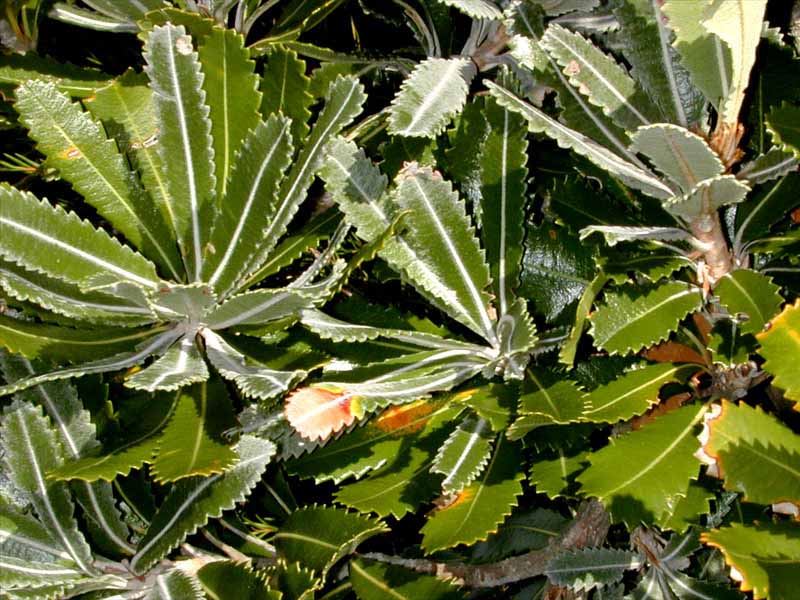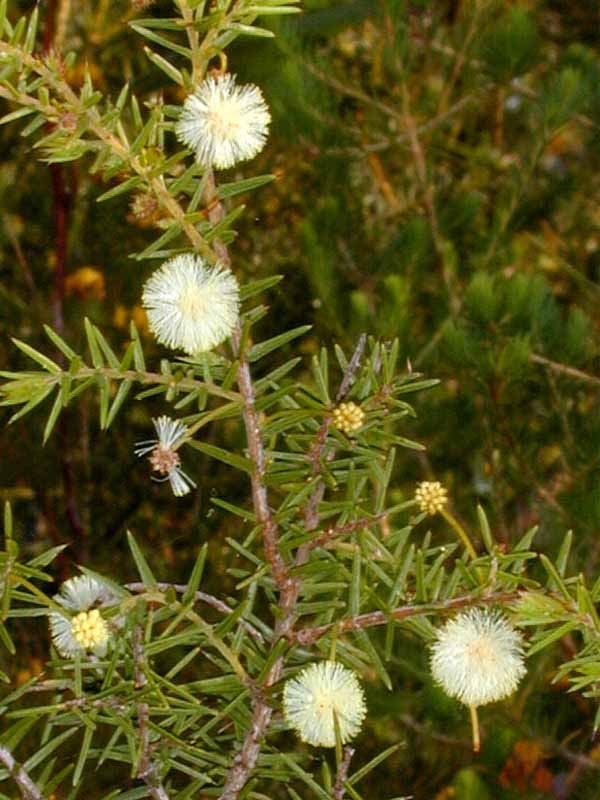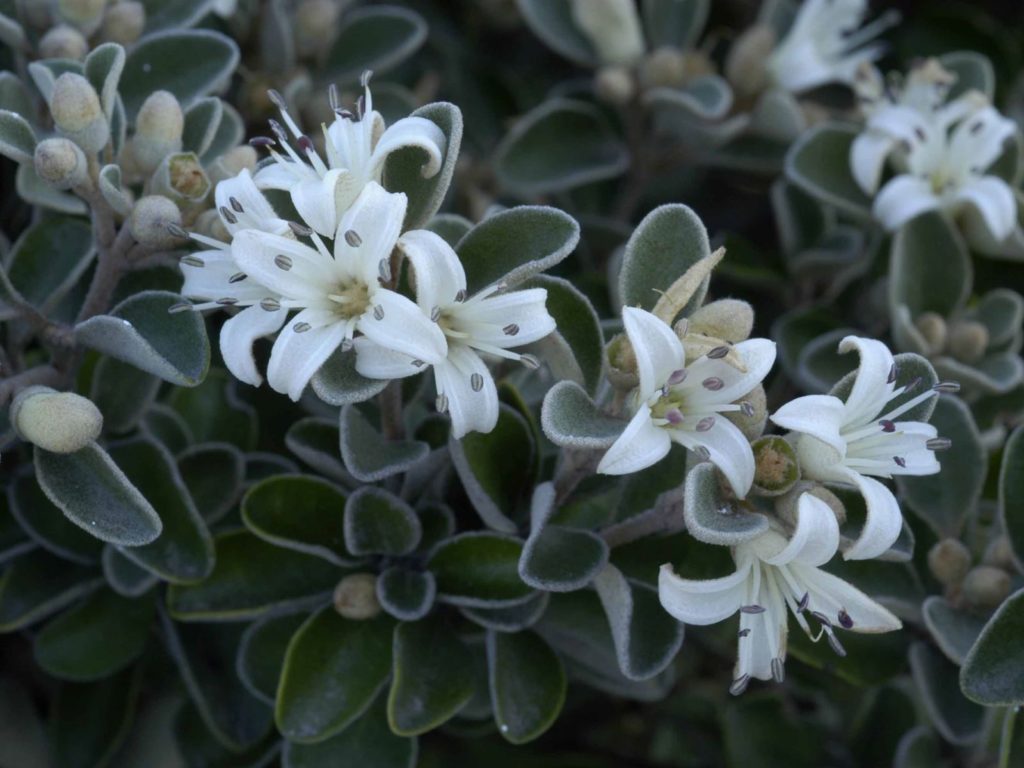The basics of botanical names
Botanical names can seem initially confronting but it all makes sense when you understand the origins of the names. Botanical names have several benefits over common names:
- They help ensure a unique name for each species for clear communication for research and study.
- They avoid the confusion of common names which can vary for the same plant or vary across locations.
- They convey relationships between plants.
The binomial system was first formalised by the Swedish botanist Carl Linnaeus in 1753. The binomial system has two parts: a genus name and a species names. Banksia serrata is an example. Names are written in Latin, with many derived from Latin and Greek words.

The how of botanical names
Binomial names for plants have been created since 1753 which means there have been many different people naming plants over time with different experiences. Names usually refer to characteristics of plants or have some connection to the plant. Names are mostly logical, but they are sometimes creative or obscure. This can happen because new plants are discovered, but suitable names are already taken. Not every plant with long leaves can be called longifolia. Names can also change over time.
There are many sources for genus names, with many named after people or a feature of the plant. For instance, the Banksia genus was named by the son of Carl Linnaeus in 1782 after Sir Joseph Banks who collected banksias in Australia in 1770. The Acacia genus is named from the Greek words ‘ake’ or ‘akis’ = sharp point referring to the thorns of many African acacias.

The origins of species names
Many species names relate to a feature or characteristics of the plant such as the flower, leaf, fruit, seed, bark, size, shape, colour, texture, habit or habitat. The feature may be distinctive or not so, and the feature and name may not be unique to only one species. There can be more than one way to describe a similar feature such as a yellow flower, a large fruit or small leaves.
Species names have common components. The species name can be a one-word descriptor like minor, referring to small leaves or flowers, or a longer word which is a combination of a prefix and a suffix. Learn to recognise and mix ‘n match common prefixes and suffixes to make life easier. Names use words of Latin and Greek origin, many of which have an English equivalent still used today. The Latin word pungens means sharp or pointed (think of pungent).
Single word descriptors
Descriptors can refer to size or shape such as minor = small in Actinotus minor, or to other features. Maculata means spotted or blotched. Think of the word immaculate which means spotless. Eremophila maculata refers to the spotted flowers, whereas Corymbia maculata refers to the mottled bark. Undulatum means wavy (think of undulating hills), used for the wavy leaf edges of Pittosporum undulatum.

Prefixes = beginnings of words
Here are some common prefixes to look out for:
Numbers
- uni-, mono- = one
- bi- or di- = two
- tri- = three
- quad-, tetra- = four
Size and position
- micro-, parvi-, min- = small
- macro-, grand- = large
- sub- = below, slightly
- de- = down, away
- re- = back
- long- = long
- angust- = narrow
- brachy- = short
Characteristics
- a-, an-, ana-, ab- = no, without
- con-, com-, sym- = with, together
- hetero- = different
- al- = similar, like
- xero- = dry
- xylo- = woody
Colours
- Black: mela-, niger, nigrans
- White: leuc-, niv-, alb-
- Silver and grey: argent-, glauc-
- Yellow and gold: chrys-, xantho-, flav-, lut-, aur-
- Reds: ruf-, rub-, ros-, eryth-, fer-, ferr-, flamm-, haem-
- Purple: purpur-, viol-, indig-
- Green: vir-, ver-, verd-
- Blue: cyan, caerul-

Suffixes = endings of words
Parts of the plant
- -flora, -anth, -stemon, -styla = flower
- -folia, -phylla = leaf
- -nerv = veins
- -carpa, -sperma, -spora, -gyne = fruit, seed
- -cephalus = head
- -rhiz = root
- -dend = tree
- -oxylon = wood
- -pogon = beard, hairs
- com, trich, pil = hair
Descriptions
- -oides = like
- -aceus = like
- -ens, -ensis = place
- -escens
- -fera = bearing
- -ula = diminutive
Here are some examples:
- a + phylla = without leaves
- micro + phylla = small leaves
- longi + folia = long leaves
- grandi + flora = large flowers
- macro + carpa = big fruit
- tri + nervia = three veins on leaves
- quinque + nervia = five veins
- resin + fera = bearing resin
- indigo + fera = bearing indigo flowers
Species names about foliage
Many names refer to foliage, based on either the Latin folia or the Greek phylla meaning leaf.
- Acacia aphylla = without phyllodes
- Banksia serrata = serrated leaves
- Callicoma serratifolia = serrated leaves
- Lomandra longifolia = long leaf
- Epacris microphylla = small leaf
Names may refer to the leaf tip, texture or leaf margins.
- Grevillea mucronulata = small mucron or leaf tip
- Banksia spinulosa = leaves have/are little spines
- Banksia integrifolia = entire or integral leaves
- Banksia marginata = downcurled leaf margins
Some names refer to foliage that looks like something else:
- Banksia ericifolia = leaves like Ericas (heaths)
- Acacia podalyrifolia = like South African Podalyria genus
- Acacia ulicifolia = like Ulex (gorse)
- Acacia myrtifolia = like Myrtle
- Grevillea buxifolia = like Buxus
- Isopogon anemonifolius = leaves shaped like anemone
- Melaleuca thymifolia = leaves like thyme
The -oides ending = like: Eriostemon myoporoides = like Myoporum and Leptospermum arachnoides = like a spider.
Names about other characteristics include:
- scent (-odora): Acacia suaveolens and Cymbidium suave = sweet, Backhousia citriodora = lemon-scented
- showiness and beauty: Dendrobium speciosum = showy and Telopea speciosissima = very showy. Also Crowea exalata and Doryanthes excelsa
- growing habit or size: Billardieria scandens, Hibbertia scandens = climbing (think ascend, descendant)
- bark: Eucalyptus squamosa = scaly bark (think skin cancer)
- texture: Grevillea lanigera = woolly (think lanolin), Acacia pubescens = finely hairy, downy leaves (think pubescent), Patersonia sericea = silky flowers, Grevillea sericea = silky hairs under leaves
- edible (or not): Austromyrtus dulcis = sweet fruit (think dulcet tones), Smilax glyciphylla = sweet leaves (think glycerin or glycaemic) and Leptomeria acida = sour fruit.
Species names about places include:
- actual place names (-ensis ending): Acacia chinchillensis = from Chinchilla in Queensland, Banksia vincentia = from Vincentia in NSW and Banksia croajingolensis = from Croajingolong in Victoria (derived from Krauatungalung words = belonging to the east)
- type of place or habitat: Casuarina littoralis = coastal, edge, Lomandra fluviatilis = river, Indigofera australis = southern.

Species names about people
Some species are named after people including (mostly male) collectors, patrons, explorers and botanists. Grevillea banksii is just one of the 80 species named after patron of the sciences Sir Joseph Banks. Wollemia nobilis was named more recently after NPWS ranger David Noble. Eucalyptus bosistoana was named after Joseph Bosisto, a pioneer of the Eucalyptus oil industry with a brand name still available. Olearia flocktoniae is one of the few species named after a woman, botanical artist Margaret Flockton, which explains the -iae ending (-ii for a male name).
Conclusion: Demystifying names – it all makes sense (more or less)
- Look at the plant – what are its noticeable characteristics?
- Look at the origin of the botanical names.
- Think of links to English words to remember Latin and Greek words.
- Use name origins to help identify and remember species.
For instance:
- Chrysocephalum apiculatum: Chrys = yellow + cephalum = head, apiculatum refers to the little tip on the leaf, from apex = tip.
- Elaeocarpus reticulatus (Blueberry ash): elae = olive + carpus = fruit, reticulatus = network of leaf veins.
Resources
Reference books, such as Les Robinson’s Field Guide to the Native Plants of Sydney, often explain the origins of names. There are also books that just focus on origins of plant names. Read about a dictionary of Australian plant names here.
